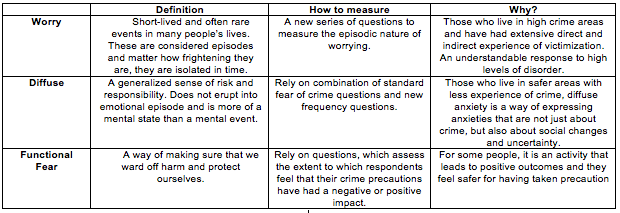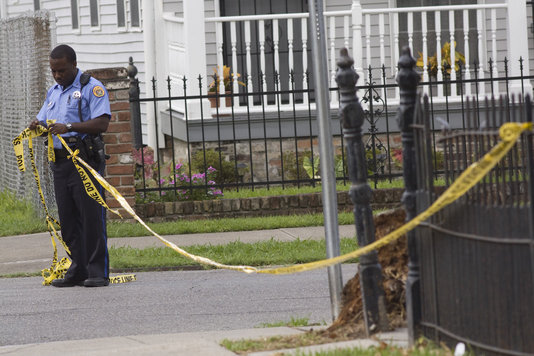Fear of crime refers to the fear of being a victim. This is an active, multidisciplinary field of study contributed to by policy makers, practitioners and academics.
Jonathan Jackson, Emily Gray and Stephen Farrall, with funding from the Economic and Social Research Council found that crime was manifested in three principal ‘streams’ of experience. These streams are consistent with the distinction made between rare emotional events of worry and more widespread and generalised anxiety.¹
The study determined that there are three types of fear of crime¹:

In reality, lying behind public perceptions of crime are concerns about group values, normative consensus and moral standards.¹ These are the factors that affect what category a person or group falls into at any given moment.
The study concluded that public concerns about crime emerge when we see others in our environment as lacking shared norms and values.¹ When we lose both interpersonal trust and the broader sense of trust in the local structures of formal and informal social control, we are vulnerable to developing a fear of crime.¹ The fear emerges as a mixture of perceptions and anxieties, part of a broader conception of quality of life.¹
Many policy makers and practitioners find the concept of fear of crime and the growth of it ineffective. It raises emotional temperature of debates about criminal justice policies and leads to increasingly punitive but no more effective policies.¹ Many argue that the fear of crime draws attention away from the tangle reductions in crime since the mid-1990s.¹
Other scholars argue that crime emerges out of the sense of neighborhood breakdown and stability, as well as broader anxieties that shape how we will make sense of our environment.¹ This can be a metaphor for other changes in society.
It is important to note though that most psychologists and sociologists agree worrying and fear of crime can be healthy and an evolutionary advantage, to a reasonable extent.
Reference:
1. Jackson, Jonathan, Emily Gray and Stephen Farrall. Untangling the fear of crime. Retrieved May 8, 2015, from http://journals1.scholarsportal.info.proxy.queensu.ca/tmp/4282483691768069619.pdf
Image source: Wikimedia Commons
© BrainMass Inc. brainmass.com July 25, 2024, 7:22 pm ad1c9bdddf